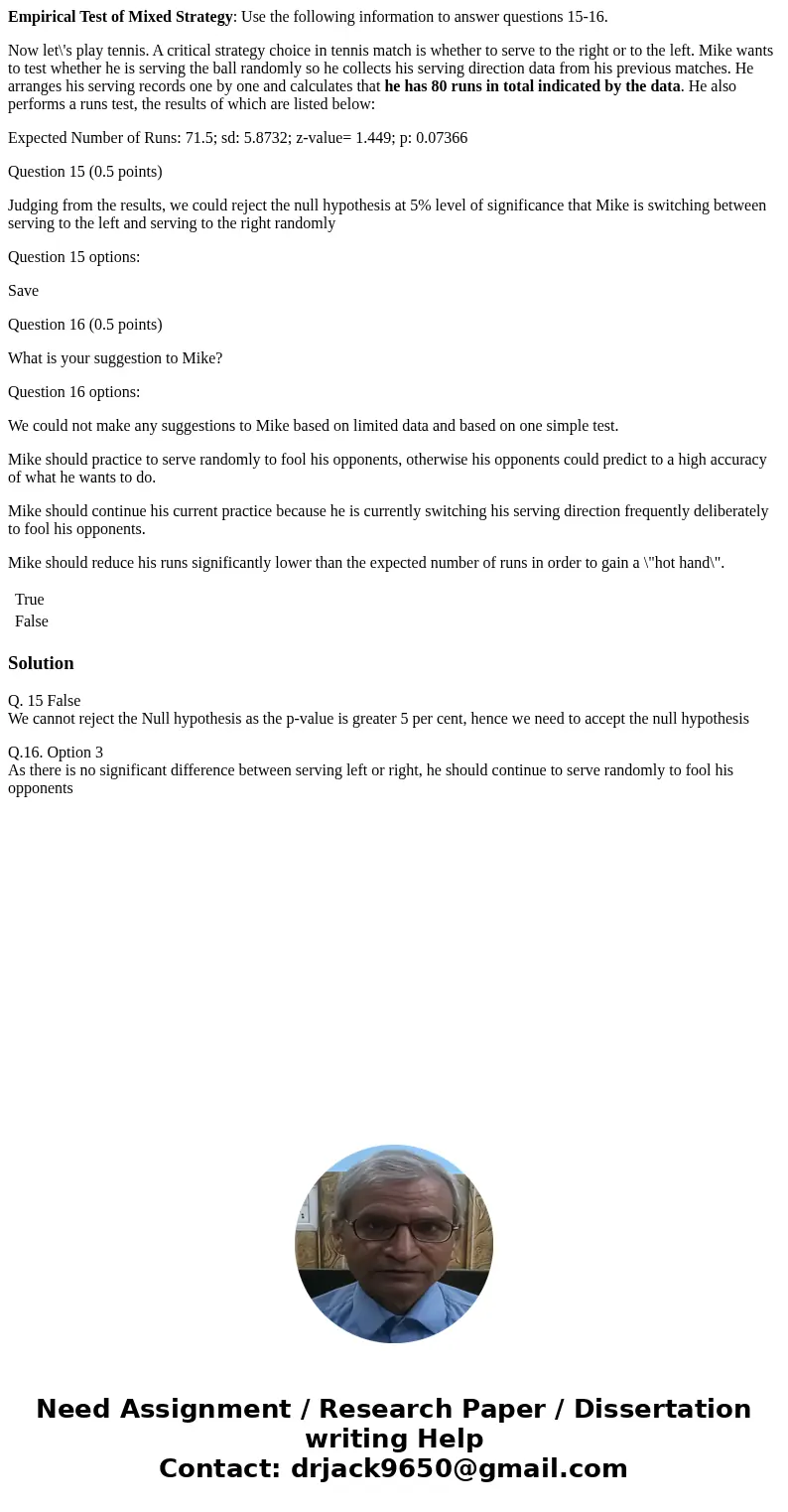Empirical Test of Mixed Strategy Use the following informati
Empirical Test of Mixed Strategy: Use the following information to answer questions 15-16.
Now let\'s play tennis. A critical strategy choice in tennis match is whether to serve to the right or to the left. Mike wants to test whether he is serving the ball randomly so he collects his serving direction data from his previous matches. He arranges his serving records one by one and calculates that he has 80 runs in total indicated by the data. He also performs a runs test, the results of which are listed below:
Expected Number of Runs: 71.5; sd: 5.8732; z-value= 1.449; p: 0.07366
Question 15 (0.5 points)
Judging from the results, we could reject the null hypothesis at 5% level of significance that Mike is switching between serving to the left and serving to the right randomly
Question 15 options:
Save
Question 16 (0.5 points)
What is your suggestion to Mike?
Question 16 options:
We could not make any suggestions to Mike based on limited data and based on one simple test.
Mike should practice to serve randomly to fool his opponents, otherwise his opponents could predict to a high accuracy of what he wants to do.
Mike should continue his current practice because he is currently switching his serving direction frequently deliberately to fool his opponents.
Mike should reduce his runs significantly lower than the expected number of runs in order to gain a \"hot hand\".
| True | |
| False |
Solution
Q. 15 False
We cannot reject the Null hypothesis as the p-value is greater 5 per cent, hence we need to accept the null hypothesis
Q.16. Option 3
As there is no significant difference between serving left or right, he should continue to serve randomly to fool his opponents

 Homework Sourse
Homework Sourse